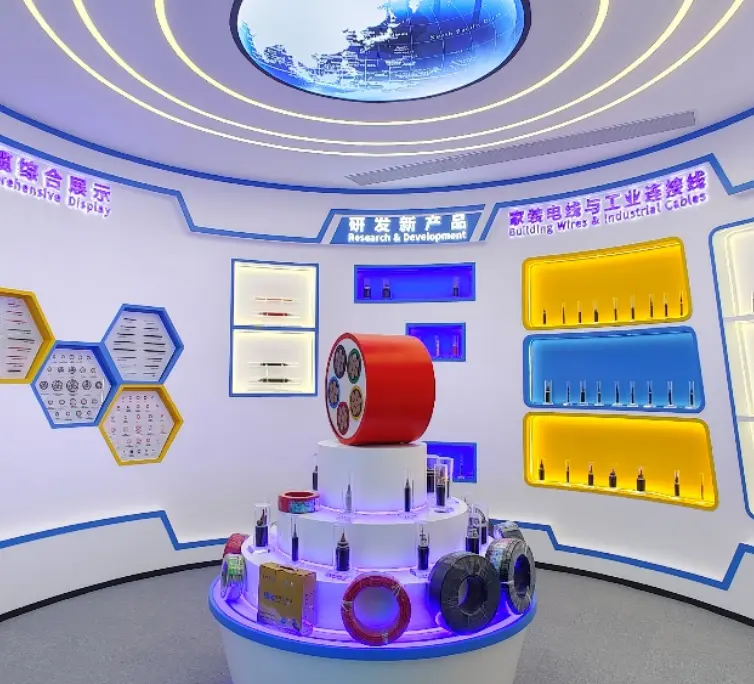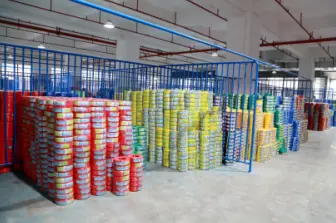The Development Direction and Environmental Performance of Low-smoke Halogen-free Cables
1. The development of low-smoke halogen-free cable
In the 21st century, the economy is undergoing rapid development, and environmentally friendly products have often appeared in our eyes. The application of PVC wires and cables such as power grid transformation and infrastructure upgrades have accelerated the pace, and the demand for PVC wire and cable products has also continued. At the same time, the environmental protection performance requirements of PVC wire and cable materials will continue to increase. PVC wire and cable insulation and sheath use plasticm commonly known as PVC, wire and cable material.
PVC wire&cable manufacturers are based on PVC wire and cable enterprises as users. As long as there is demand for PVC wire and cable, there is a market for PVC wire and cable materials.
Therefore, from a period of time, low-smoke halogen-free cables have broad market development prospects.
The research and development of low-smoke halogen-free flame-retardant PVC wire and cable materials in China is relatively late, and the research on low-smoke halogen-free cables is still in its infancy. Although there are about 20 manufacturers of halogen-free flame-retardant PVC wire and cable in China, they basically cannot solve the performance problems of halogen-free flame-retardant wire and cable materials, and the production cost is relatively high. Although the environmental performance of low-smoke, halogen-free and flame-retardant PVC wire and cable materials conforms to social requirements and is the development direction of China's wire and cable materials, its application fields are very limited so far, mainly used in subways, urban rails, ships, and High-rise buildings and nuclear power plants are far from popular.
The insulation and sheath materials of PVC wire and cable are relatively cheap, with excellent mechanical properties and easy processing, making it the most used material in the wire and cable industry for a long time. With the development of society, more and more attention has been paid to environmental issues, and many countries have formulated various environmental protection policies. Therefore, people are more inclined to use green and environmentally friendly PVC wire and cable materials. Low-smoke halogen-free flame-retardant PVC wire and cable material is one of the most popular environmentally friendly wire and cable materials.
Whether at home or abroad, green and environmental protection are the development direction of PVC wire and cable, with a wide range of applications and a very broad market prospect. China's current research on green and environmentally friendly PVC wire and cable materials is still in its infancy, but it has already started after all.
2. Environmental performance of low-smoke halogen-free cables
The low-smoke halogen-free cable sheath is composed of thermoplastic or thermosetting which has low smoke emission when heated and is halogen-free.
Most of the network wire coating is composed of polyethylene, polyvinyl chloride or thermoplastic polyurethane. If it catches fire, chlorinated plastic will release toxic hydrogen chloride, and if it encounters water, it will produce hydrochloric acid. The low-smoke halogen-free materials will not release hydrogen halides or other acids during fire.
Low-smoke halogen-free materials can reduce the toxic and corrosive gases produced when they burn. In poorly ventilated environments such as airplanes, train cars, or ships, low-smoke and halogen-free materials are often used. Low-smoke and halogen-free materials are also commonly used in the railway industry, because there are high-voltage lines under the railway or signal lines that transmit the position of the train. The use of low-smoke halogen-free materials also reduces the accumulation of toxic gases when the circuit is damaged due to fire or short circuit.
Like in the railway industry or shipbuilding industry, one of the most important requirements is to protect personnel and equipment from toxic and corrosive gases. In these occasions, low-smoke and halogen-free materials are required to be used in the outer layer of the wires and cables.
Latest News & Blog
 English
English  français
français  Deutsch
Deutsch  العربية
العربية  tiếng việt
tiếng việt  ไทย
ไทย  čeština
čeština  Indonesia
Indonesia  Eesti
Eesti  български
български  slovenčina
slovenčina 



